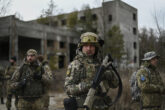March 08, 2019
What to Expect When You’re Expecting a Defense Budget Masterpiece
In December of 2017, before the Department of Defense released its 2019 budget request, then-Deputy Secretary of Defense Patrick Shanahan tried to manage expectations about its contents. He argued that the National Defense Strategy, with its prioritization of competition with China and Russia, was so new that the Pentagon didn’t have time to fully incorporate its precepts into the 2019 budget submission. But, he told us, the 2020 budget request would be a “masterpiece,” fully funding the strategy’s direction to invest in the capabilities required to sustain the U.S. military’s advantage over China and Russia while finding more economical ways of prosecuting ongoing counter-terrorism campaigns.
During our time in the Pentagon, we were deeply involved with defense budgets and strategies. Now here we are, over a year later, patiently waiting for a budget request that perfectly aligns resources with the defense strategy and wondering: What would the 2020 defense budget request look like if now-Acting Secretary Shanahan succeeds in delivering on his promised masterpiece?
But first, a word on the problems the National Defense Strategy is trying to solve: U.S. defense strategy for the 70 years since the end of World War II has rested on two interdependent pillars: a constellation of allies and partners and an ability to conduct military operations globally. Allies and partners extend U.S. influence and provide bases and forces to support U.S. military operations. In return, the U.S. military’s ability to project power deters or defeats armed aggression against our allies and partners. Together, these pillars have prevented the outbreak of major wars and made the United States secure and immensely powerful. Today, both pillars are endangered by a combination of neglect, underinvestment, and concerted Chinese and Russian efforts to undermine them.
Read the full article in War on the Rocks.
More from CNAS
-
Defense / Transatlantic Security
When Defense Becomes Destruction: Austria-Hungary’s Mistake and Ukraine’s RiskThis article was originally posted on War on the Rocks. The southeastern Polish city of Przemyśl, with its elegant 19th century Habsburg-era train station, remains one of the ...
By Franz-Stefan Gady
-
Defense / Transatlantic Security
Ukraine’s Catch-22 MomentThis article was originally published in the Financial Times. In Joseph Heller’s wartime classic, Catch-22, the protagonist Yossarian seeks out the US army surgeon Doc Daneeka...
By Franz-Stefan Gady
-
CNAS Insights | Budgetary Own Goals Undermine “Speed and Volume”
On November 7, Secretary of Defense Pete Hegseth laid out a plan to overhaul the Department of Defense’s (DOD’s) acquisition system. Placing an emphasis on delivering new capa...
By Philip Sheers, Carlton Haelig & Stacie Pettyjohn
-
Drones: Who Is Making the New Weapons of War?
From Ukraine and Russia to Gaza and Sudan, drones have become a key weapon of war. Which companies are making them, and profiting from this rapidly expanding but controversial...
By Stacie Pettyjohn




